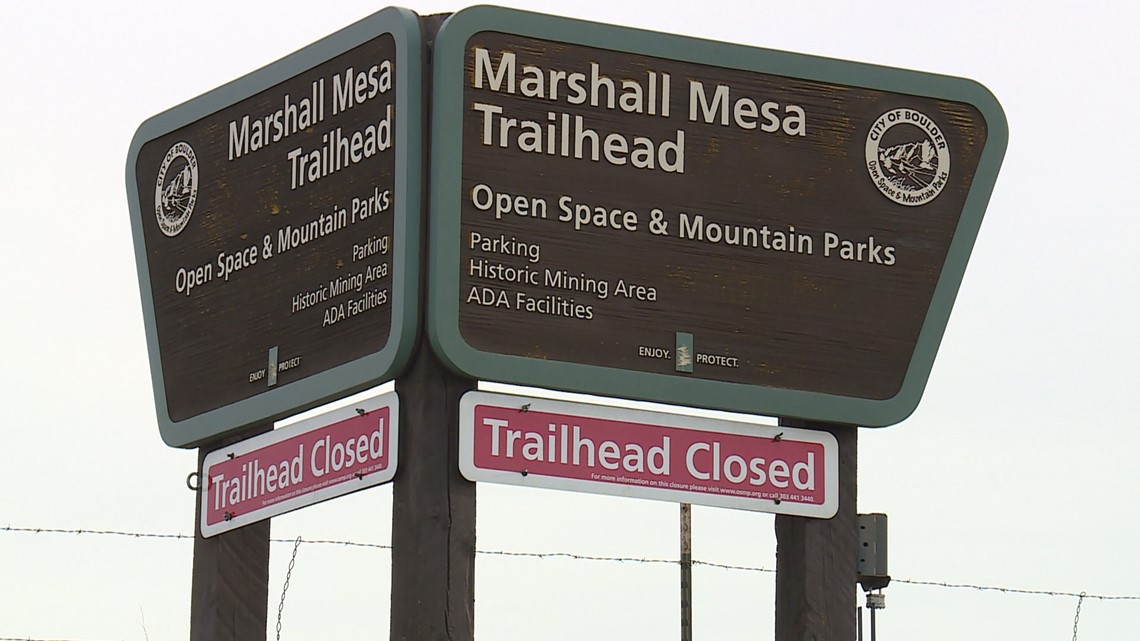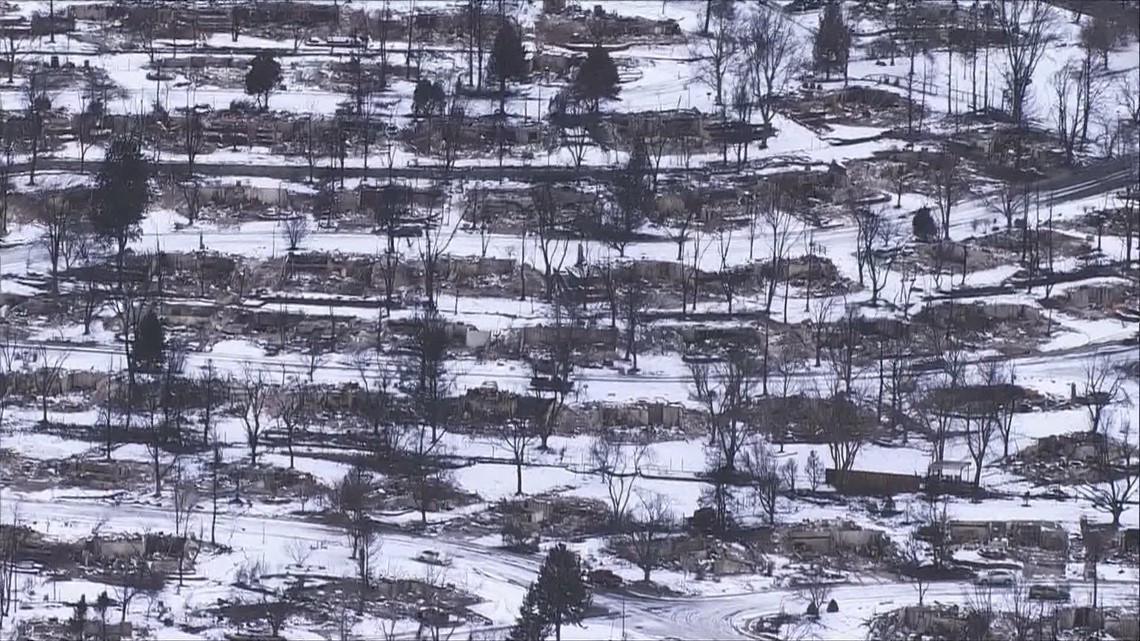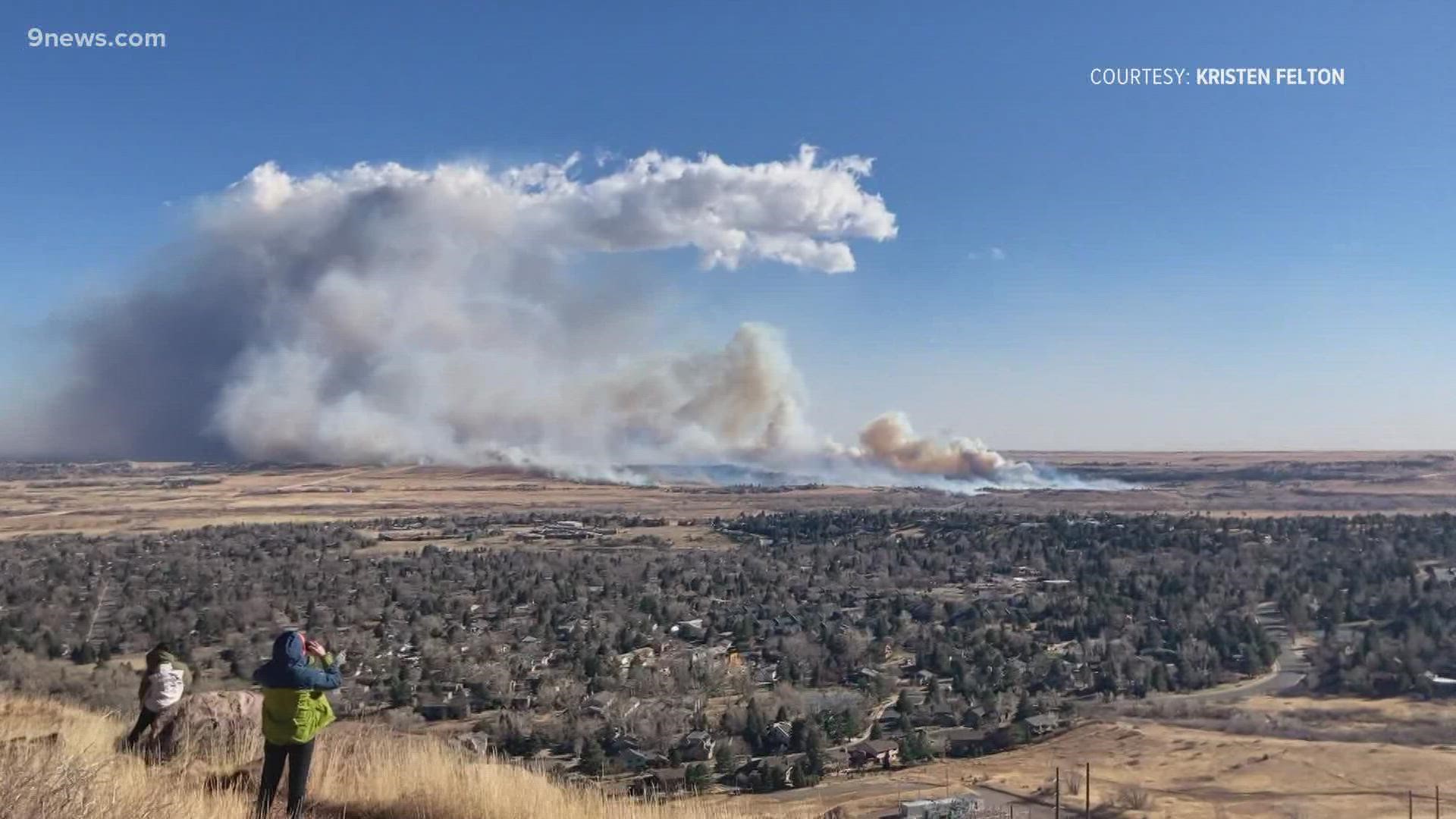BOULDER COUNTY, Colo. — Fire spread scientists with the Institute for Business and Home Safety (IBHS) spent the weekend collecting data in the Marshall Fire burn area.
"Wildfires are escalating. The risk is growing," said Roy Wright, president and CEO of IBHS. "We should be concerned, but we shouldn't be hopeless. There are specific things we can do that can limit the impact of these wildfires."
Wright said IBHS researchers aim to use science to explain how the Marshall Fire spread from the edge of the wildland into the urban community.
He said there were many other factors, besides the high winds, that allowed the Marshall Fire to spread so rapidly, and that the fire will now redefine the bounds of wildland fire preparation.
OPEN SPACE
The IBHS team's first point of interest was tracing the fire behavior back to its first move through the Marshall Mesa open space park.
It's one of the numerous open spaces on the Front Range. Wright said they play a crucial role in urban living, but they also invite wildfire into our community.
"We need open space," he said. "And we need to pay very close attention to where that open space meets the neighborhood."
The IBHS researchers said the initial grass fire laid the foundation of heat that would allow the fire to spread into the urban part of Superior and Louisville.
"When the grass burns, it preheats all the thicker fuels around it," said Faraz Hedayati, an IBHS research engineer. "That drives the moisture out so everything becomes more susceptible to fire, and when the fire front or an ember reaches that dry fuel, it ignites fast."


He said there is a fire front in a grass fire, where the flames are quickly jumping from one blade of grass to another as it advances. It's like a crown fire in the trees, only on a smaller scale.
There is also an ember storm, but with small embers mainly composed of scalding blades of grass. Hedayati said the embers only jump about 100 feet ahead of the fire front in a typical grass fire.
The IBHS team said they will be looking at whether or not larger or additional fuel breaks might have been able to slow the fire.
"That can be effective, but in the winds that we were looking at in the Marshall Fire in excess of 70 mph, even a 100-foot-wide fire break might not have been enough to stop the embers from spotting over," said Dan Gorham, another research engineer on the IBHS team.
There may have been multiple spots where the fire managed to cross the Boulder Turnpike.
Gorham said they also need to look at how vegetation can be managed in open spaces: adding patches of larger fuel; letting some areas of grass grow and mowing some spots down; or adding different varieties of plants to bring discontinuity to the open space.
"That discontinuity in fuel might reduce the fire intensity as it spreads through it," he said. "And so when it does get up to that fuel break, it doesn't have enough momentum to pass through it."
Gorham said that IBHS is already in the midst of fuel break study, and the Marshall Fire data will be added to that project.
STRUCTURE SEPARATION
Another fire spread factor the team looked at was the close separation between some of the structures once the fire reached the neighborhoods.
"The distance between buildings is like 10 feet. Well, that's not enough, to be honest," Hedayati said.
He said he recognizes the trend to build homes closer together, as builders take advantage of space to make homes larger, but that accelerates the spread of a wildfire in a dense neighborhood.
More spacing could give first responders time to extinguish a fire before it moves on to the next house, or at least make the fire take longer to consume a neighborhood.


Hedayati said in the case of the Marshall Fire, more homes would have been spared when the wind conditions finally subsided if the fire had moved through the neighborhoods just a little slower.
This is another topic of current research being conducted at the IBHS headquarters in South Carolina. He said the goal of that project is to determine an ideal distance between structures.
"We want homes to be built resilient while at the same time we want people to enjoy their property, so their houses can be big," Hedayati said. "So what is that happy medium between those two interests?"
BUILDING MATERIALS
Another factor that IBHS is constantly studying is building materials. They said data from the Marshall Fire will be applied to that research.
They want to see how more fire-resistant materials might have slowed the fire and also how different materials might limit flying embers.
Hedayati said things like roof tiles and siding burn hotter and fly farther than vegetation embers in a forest fire. Instead of round or cylindrical pine cones and tree branches, things that come off burning buildings have flatter sides.
"So they are more aerodynamic friendly," he said. "If you look at them, they look like an airplane wing, so they can really go up."


Hedayati said the embers in the Marshall Fire were capable of traveling several miles in the air.
One example would be the Element Hotel, where there was no discernable fuel track on the ground that could have led to its ignition.
"It will take much more research to figure it out, but this hotel was almost certainly ignited by an ember attack," Hedayati said.
The embers likely came from the Sagamore neighborhood that surrounds the Superior Marketplace. Almost every home in that area burned to the ground.
There is also an example on the north side of the Turnpike and to the west of McCaslin, where a single building of businesses burned while nothing else around it was touched by fire.
A Subway, a nail salon, a tanning salon, and a new restaurant called the Rotary were lost. This was also likely another example of a large ember attack traveling a long distance from the south side of the Turnpike.
RELATED: Water supplies in Louisville, Superior almost ran dry as firefighters battled Marshall Fire flames
SUGGESTED VIDEOS: Marshall Fire Coverage

